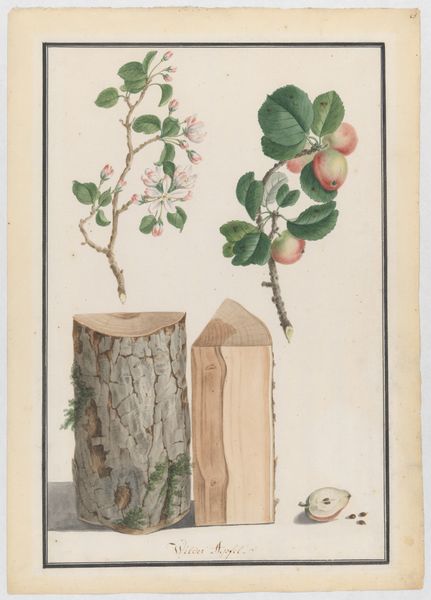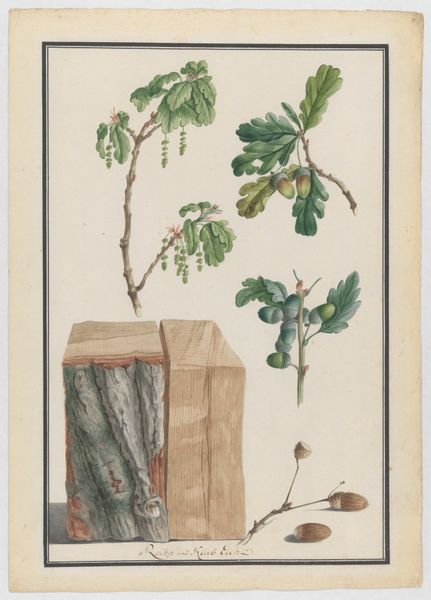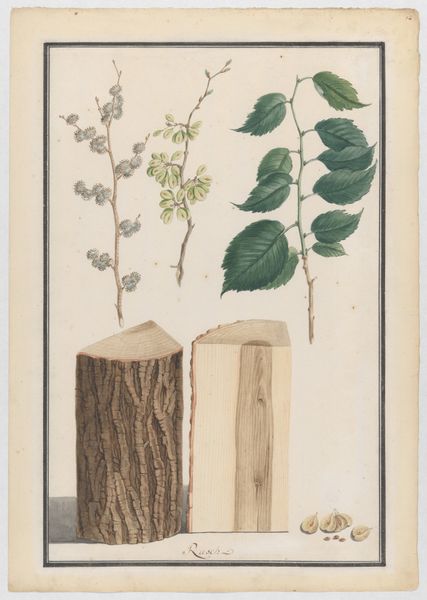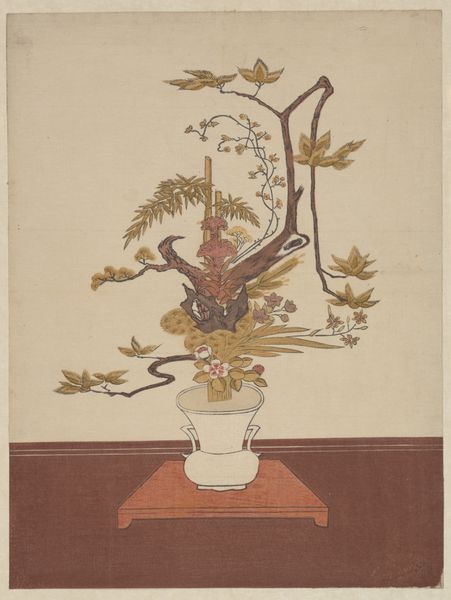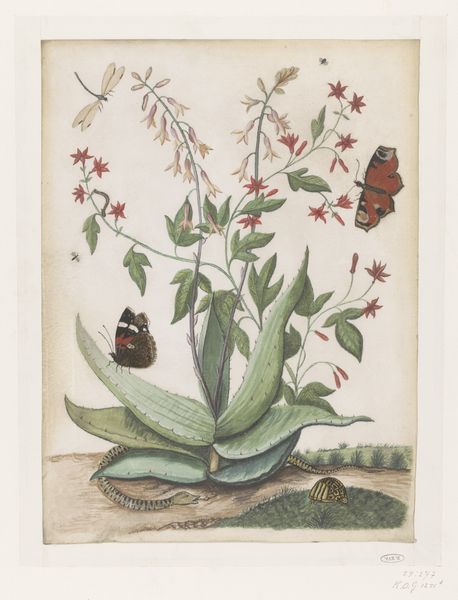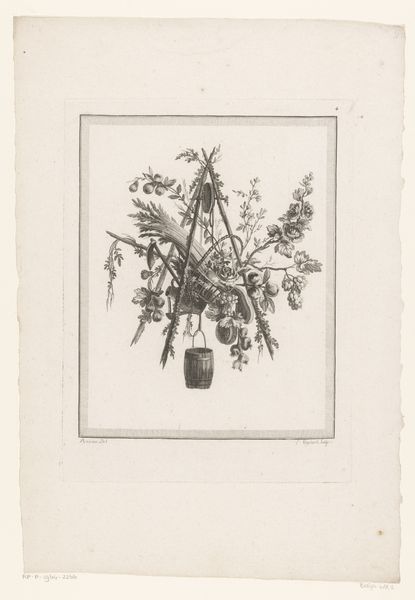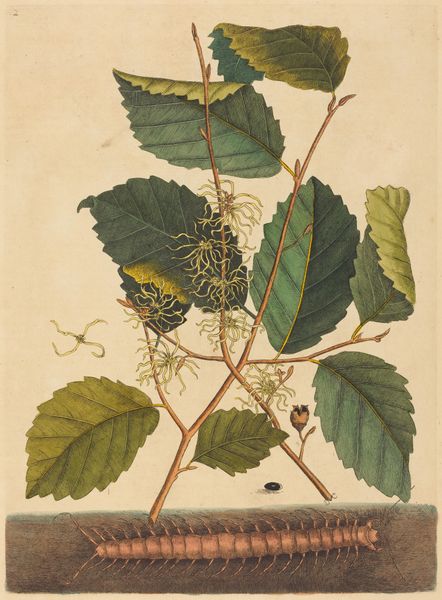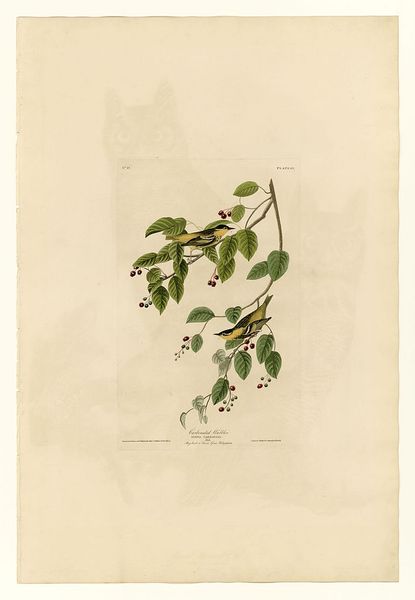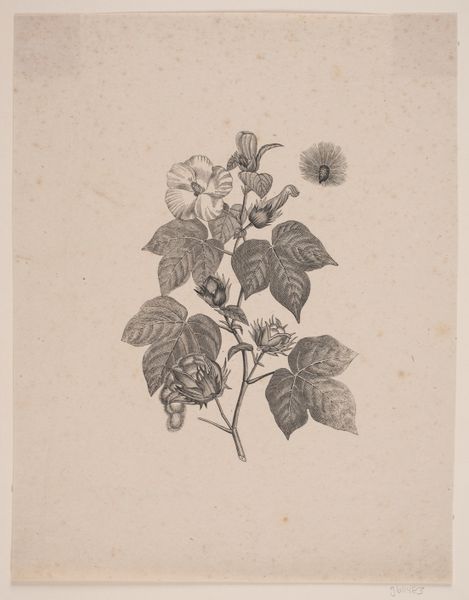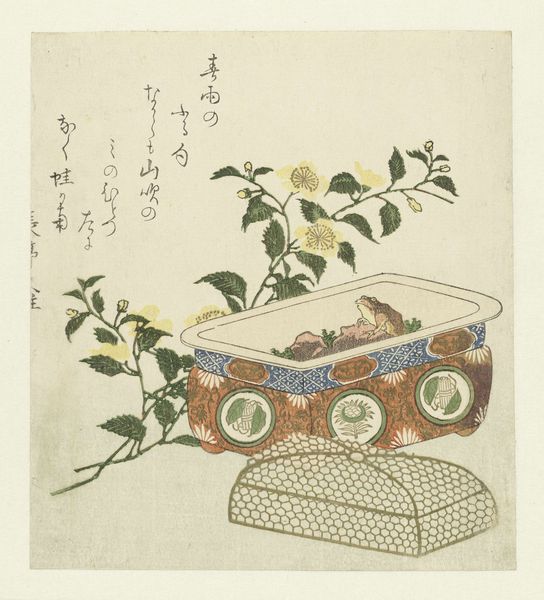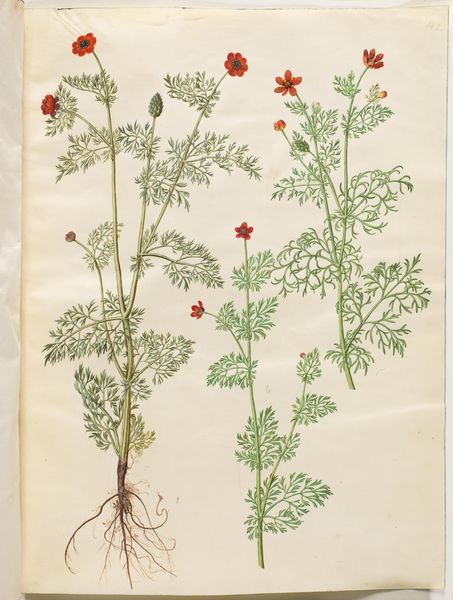
print, woodblock-print
# print
#
woodblock-print
#
japonisme
#
watercolour illustration
Dimensions: 19 1/16 x 11 11/16 in. (48.42 x 29.69 cm) (image)
Copyright: Public Domain
Editor: This color lithograph, “Decorative Panel,” by Henri Rachou, dates back to 1893. It strikes me as such a peaceful scene, almost dreamlike. There's a certain stillness that’s quite captivating. What stands out to you most about this piece? Curator: It's tempting to see the quiet beauty on the surface, but let’s dig deeper. Given the context of the late 19th century, we must examine the cross-cultural exchange happening, primarily between France and Japan. It appears that Rachou was directly influenced by Japonisme. How do you think cultural appropriation plays into this? Editor: That's an interesting point. I hadn't considered it that way. I was so focused on the visual harmony and didn’t think about the power dynamics inherent in artistic borrowing. Curator: Exactly! The turtles, the inscription, and the stylized plant life aren’t just aesthetic choices; they signal a specific engagement—or perhaps a specific *mis*understanding—with Japanese culture. We can explore how Western artists, often from positions of colonial power, selectively adopted and adapted elements of Japanese art, frequently detaching them from their original social, spiritual, and historical meanings. Editor: So, is it problematic, even if the intention wasn’t malicious? Curator: It is not about individual intent but about structural power. Appropriation, even when seemingly celebratory, can perpetuate stereotypes and erase the original cultural significance. How can we, as viewers, acknowledge the beauty of the work while also being critical of its historical context? Editor: That’s a crucial question. I guess it forces us to be more informed and challenge our own assumptions when looking at art. This makes me consider the role of cultural exchange in art history. Curator: Precisely. Acknowledging the complexity allows for a much richer, more nuanced understanding, wouldn’t you agree? There's always so much more to these so-called decorative scenes, isn’t there?
Comments
minneapolisinstituteofart about 2 years ago
⋮
William Morris's writings on the Arts and Crafts movement didn't appear in French journals until 1892, but André Marty already shared one of Morris's major beliefs: society would be better if artists applied their talents to everyday objects. As this print's title indicates, L'Estampe originale subscribers were expected to remove this lithograph from the album and use it as a wall hanging.
Join the conversation
Join millions of artists and users on Artera today and experience the ultimate creative platform.
